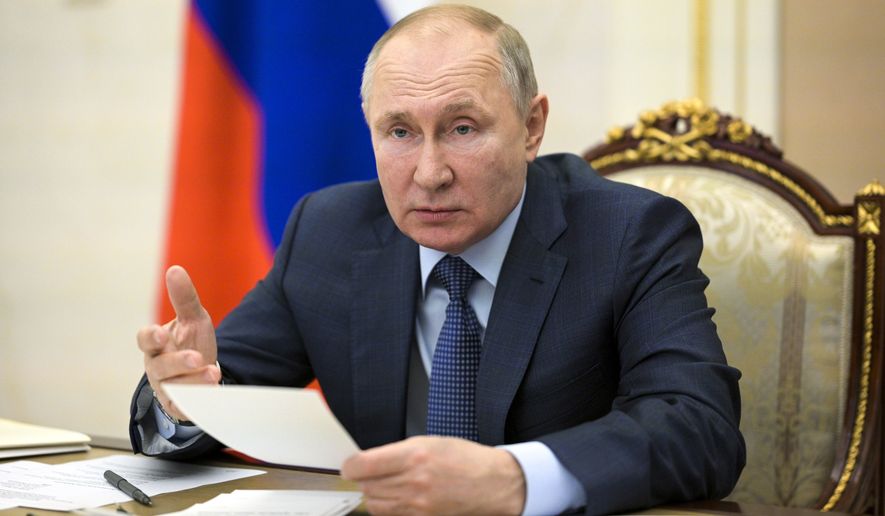OPINION:
Over the last few weeks, Russia has been conducting a sizable military buildup along its border with Ukraine and in occupied Crimea. These Russian deployments are spontaneous and the Kremlin’s plan is unclear. But one thing is certain: The Biden administration is being tested by Moscow.
Ukraine is in the midst of a national struggle that will determine its future geopolitical orientation: toward the West or toward Moscow. The outcome of this struggle will have long-term implications for the trans-Atlantic community and the notion of national sovereignty. Since 2014, almost 5% of Ukraine’s landmass and more than half of its coastline have been illegally occupied by Russia. Moscow’s illegal annexation of Crimea marked the first time since 1945 that a country used military force to acquire more territory in Europe.
To put it bluntly, Russia invaded Ukraine. Russia illegally occupies Crimea. Russia provoked and now supports a separatist movement in eastern Ukraine that did not previously exist. Russia is the aggressor, and Ukraine is the victim.
Modern Ukraine represents the idea that every nation in Europe has the sovereign ability to determine its own path and to decide with whom it has relations and how and by whom it is governed. No outside actor (in this case Russia) should have a veto on membership or closer relations with organizations like NATO. It is in America’s interest that Ukraine remains independent and sovereign, able to choose its own destiny without outside interference.
Because Ukraine is not a NATO member, it does not enjoy a security guarantee from the U.S.
However, that does not mean the U.S. must or should sit idly by and do nothing about Russian predations. A massive U.S. military intervention to liberate Crimea may be off the table, but it is not the only option. There is plenty the U.S. can do to help Ukraine.
The most immediate thing Washington can do is share intelligence with Ukraine about the Russian military buildup. It should also make satellite imagery of the buildup available to the public.
The U.S. should also increase its naval presence into the Black Sea. Soon after Russia’s invasion of Ukraine in 2014, the U.S. stepped up its presence in the sea. Since then, however, our naval assets there have been drastically reduced.
There are levers to pull in northern Europe, too. The U.S. should use Russia’s aggression in Ukraine as the reason to kill Nord Stream 2 once and for all. Nord Stream 2 is a Russian gas pipeline that will connect Russia directly to Germany through the Baltic Sea. Russia prefers this method because it removes Ukraine from the transit route to European markets. Nord Stream 2 is neither economically necessary, nor is it geopolitically prudent. It is time to end this project.
On the military front the U.S. should increase joint exercises with Ukrainian forces and supply Kyiv more weapons, with fewer restrictions. When Ukraine received its first Javelin anti-tank missiles in 2018, part of the agreement with the Trump administration was that they would remain in storage well beyond the front lines. This makes no sense today. Every country has the right to self-defense.
Furthermore, the U.S. should help Ukraine improve its maritime capabilities. The right to self-defense does not stop at the shoreline. A stronger Ukrainian navy is in America’s interest. Washington should consider ways to increase the number of ships and other coastal defense capabilities it can provide to Ukraine.
While the future success of Ukraine will rest in large part on the shoulders of Ukrainians themselves, U.S. leadership is essential for counteracting Russian aggression and supporting reform. The new Biden administration and Congress should not hesitate to provide support for Ukraine.
With Russia piling up forces on the Ukrainian border, the U.S. should move quickly and robustly to reaffirm American commitment and support for the people of Ukraine. In turn, this will make both America and its allies safer.
• Luke Coffey is the director of The Heritage Foundation’s Allison Center for Foreign Policy Studies.




Please read our comment policy before commenting.